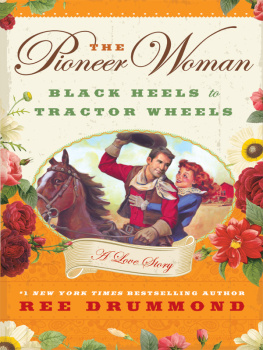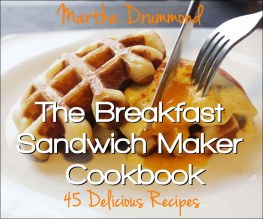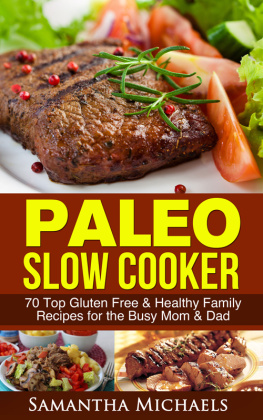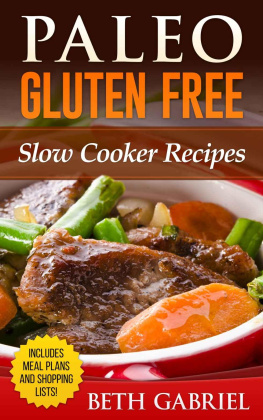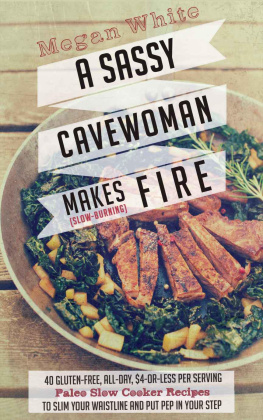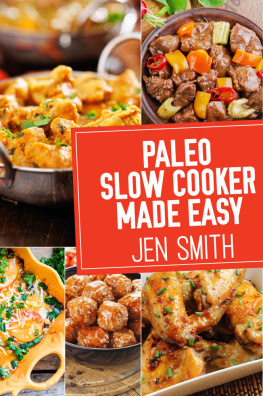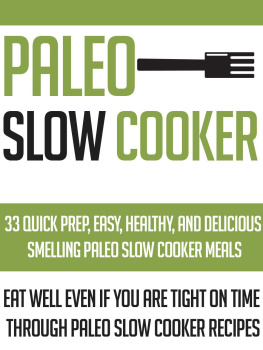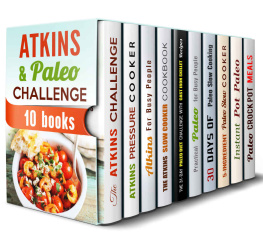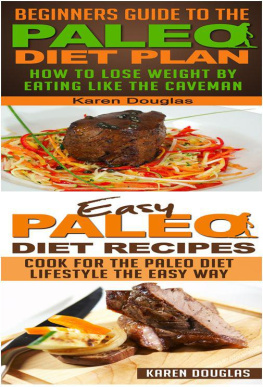Copyright by Martha Drummond 2014
All Rights Reserved. No part of this publication may be reproduced in any form or by any means, including scanning, photocopying, or otherwise without prior written permission of the copyright holder.
Table Of Contents
Introduction

Many paleo diet recipes you find require a lot of prep time, but you lead a busy life and you probably do not have time to spend hours in the kitchen. The good news is that following a paleo diet does not have to mean spending hours cooking healthy recipes. By using your slow cooker, you can put together healthy paleo meals without a lot of work. Simply add ingredients to your slow cooker, turn it on and then go to your job. You will come home to a delicious, paleo dinner that lets you relax in the evening instead of scrambling around to prepare a meal.
From breakfast dishes, to dinner recipes, to fabulously decadent desserts, you will find it all in this paleo slow cooker cookbook. It is packed with recipes that are all paleo, so you can stick to your healthy paleo diet while enjoying the ease and convenience of cooking with a slow cooker. While you are sure to appreciate all the amazing recipes included in this paleo slow cooker cookbook, you will also enjoy some helpful information on the paleo diet, the benefits of eating paleo and some slow cooker tips that will help you make sure that every recipe turns out wonderfully.
The Paleo Diet, Paleo Benefits and Intro to Slow Cookers
Before you begin using the delicious paleo recipes included in this paleo slow cooker cookbook, it is important to take a closer look at the paleo diet, the benefits of this diet and the benefits of cooking paleo with your slow cooker. Whether you are new to the paleo diet or youve been following the diet for years, the information provided is sure to prove helpful as you continue along your paleo pathway. Heres a closer look at this popular diet, as well as some helpful information on using slow cookers.
About the Paleo Diet

Although the paleo diet became popular within the past few years, it is not a new diet. A book by Walter Voegtlin was published on the subject back in 1975, which brought the diet to light in the western world. Even after the book, the popularity of the diet didnt surge until after the beginning of the 21st century. The central concept of this diet is to copy the diet that humans ate during the Paleolithic Age, thousands of years ago. The diet of Paleolithic man was low in carbs and high in protein and Voegtlin claimed that this diet offers many benefits. The paleo diet is one of many low-carb diets that have become popular within the past decade. While this diet is widely known as the paleo diet, some refer to it as the hunter-gatherer diet, the Stone Age diet and the Caveman diet.
The entire paleo diet is focused on mimicking the diet of our ancient Paleolithic ancestors, which involves eliminating foods from our diet that did not enter the human diet until after the Paleolithic Age, such as legumes, grains and other foods that are products of agriculture. The diet focuses on eating foods that would have been available to humans during the Paleolithic Age, as well as foods that can be eaten in their natural state. The claim is that the body adapted to the foods that were eaten during the Paleolithic era and the body reacted optimally to those foods. However, as agricultural products were introduced, the body began to suffer and unfortunately, those foods do not offer the nutrition benefits that foods from the Paleolithic era have to offer.
Unlike many diets, the paleo diet is designed to be a lifestyle instead of a fad diet that is used to provide temporary, fast weight loss. Of course, while this diet is low-carb, such as the South Beach and Atkins diets, there is no need to count calories or carbs while on the paleo diet. By focusing on eating the right foods, the diet helps individuals increase energy by eating more protein and helps to reduce carb intake, resulting in improved longevity and health.
What Your Paleo Diet Should Include

As you begin cooking paleo meals, it is important to know which foods your paleo diet should include. This way you can choose recipes that fit into the diet. While it can be difficult to exactly replicate the foods that were consumed during the Paleolithic period, this list of foods is fairly close, although substitutions are made in certain cases. The following foods are the foods recommended for individuals following the paleo diet.
- Eggs and Meats Eggs and meats are probably the most important foods eaten while following the paleo diet, since these foods offer you protein. Of course, ideally you should choose meats and eggs that come from animals that eat an organic, natural diet to best copy the diet of those living in the Paleolithic era. For example, cattle should be grass fed, chickens should be free range and fish should be caught in the wild if at all possible. The protein from meats and eggs helps to keep you feeling full, helps support healthy bones and muscles and boosts immune function.
- Fruits and Veggies Most fruits and veggies are allowed on the paleo diet, although peas and green beans are not allowed because they happen to be legumes. There is a bit of disagreement among proponents of this diet as to whether regular potatoes should be included in the diet. However, sweet potatoes are encouraged. When it comes to fruits, its best to limit fruit juices and dried fruits, especially for those trying to lose weight or those trying to control glucose levels. Fruits and veggies are an important part of the paleo diet because they offer the body important minerals, antioxidants, phytonutrients and vitamins.
- Seeds and Nuts Seeds and nuts are a part of the paleo diet. However, the amount of nuts eaten should be limited for those who want to lose weight. Keep in mind, since peanuts are legumes, they are not allowed on this diet. In many cases, nut milks like coconut and almond milk are used instead of dairy milk. Seeds and nuts include healthy fats, which are important to the body.
- Oils Oils that come from plants, such as coconut oil, nut oils and olive oil are fine on this diet. Canola oil is recommended by some as well.
- Drinks Of course, water is definitely encouraged, as is tea. Sweet drinks should be avoided on the diet, as should alcohol. There is debate as to whether you should drink coffee or not while following a paleo diet.
Foods to Avoid on the Paleo Diet
Now that you are aware of all the foods you should be eating on the paleo diet, it is important to know what foods to avoid while on the diet. Knowing what foods to avoid will help you as you prepare meals, helping you adapt other recipes to fit your new paleo lifestyle. Here is a look at the food categories that are generally forbidden while following the paleo diet.
- Grains Agriculture had yet to be developed during the Paleolithic era, so few grains were ever eaten. Grains, including corn and wheat products, should not be eaten on the paleo diet.
- Refined Sugars Refined sugars are forbidden while on the paleo diet. However, pure maple syrup and honey are allowed in small amounts.





